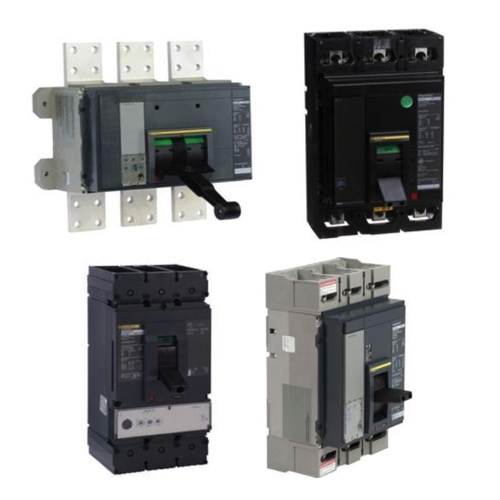Square D Breakers

Square D circuit breakers, manufactured by Schneider Electric, are widely used across residential, commercial, and industrial applications to protect electrical systems from overcurrent, short circuits, and ground fault conditions. Known for their reliability and proven design, Square D breakers are engineered to safeguard equipment, wiring, and personnel while supporting long-term system performance.
For industrial and commercial environments, Square D PowerPact molded case circuit breakers (MCCBs) provide robust protection for higher current applications. These breakers are designed to handle demanding loads and fault conditions commonly found in industrial power distribution, motor control centers, and commercial electrical systems. Advanced protection features help ensure accurate fault interruption and improved operational safety compared to older electromechanical protection devices.
Square D also offers well-known miniature circuit breaker lines for residential and light commercial use, including the QO and Homeline series. QO breakers feature fast trip response and clear visual trip indicators, making fault identification straightforward. Homeline breakers provide similar protection and functionality in a more cost-effective format, making them a common choice for new construction, renovations, and retrofit projects. Specialty options such as AFCI and GFCI breakers are also available to address fire prevention and ground fault protection requirements.
FAQs
Q: What types of Square D circuit breakers are available?
Square D offers miniature circuit breakers for residential and light commercial use, molded case circuit breakers for industrial and commercial applications, and specialty breakers such as AFCIs and GFCIs.
Q: What is the PowerPact series used for?
Square D PowerPact breakers are molded case circuit breakers designed for higher current industrial and commercial applications where reliable overcurrent and short-circuit protection is required.
Q: What is the difference between QO and Homeline breakers?
QO breakers feature faster trip response and visible trip indicators, while Homeline breakers offer similar protection at a lower cost, making them suitable for residential and light commercial installations.
Q: Are Square D breakers the same as Schneider Electric breakers?
Square D is a brand owned by Schneider Electric. Square D breakers are part of Schneider Electric’s product portfolio and are primarily designed for North American standards and applications.
Q: What is the difference between circuit breakers and fuses?
Fuses provide protection by melting and must be replaced after operation, while circuit breakers trip during overcurrent conditions and can be reset and reused. Circuit breakers offer greater convenience and branch circuit protection, while fuses are simpler and often less expensive initially.
Why Buy Square D Breakers from RSP Supply
RSP Supply offers a complete selection of Square D miniature and molded case circuit breakers for residential, commercial, and industrial applications. Our catalog includes PowerPact MCCBs, QO and Homeline breakers, and specialty protection devices to meet a wide range of electrical requirements. Customers rely on RSP Supply for knowledgeable technical support, dependable sourcing, and trusted electrical components that support safe and reliable power distribution.

